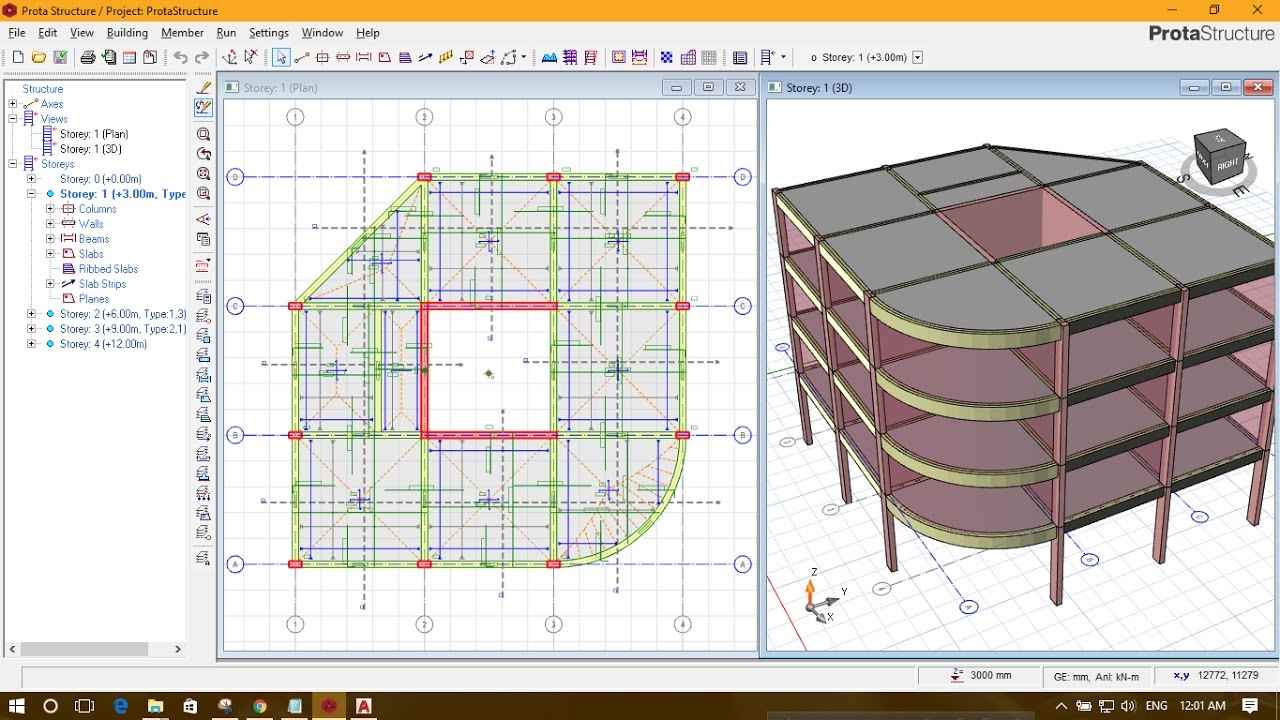

The first conceptual model for the prediction of the service life of corroded structures was developed by Tuutti, which distinguished two periods of the corrosive phenomenon (Fig. Complex models take into account the reduction of the reinforcement cross-section, the presence of a thin porous layer around the reinforcements (in which the oxides settle without stress the concrete) and the diffusion of the oxides in the cracks. The theoretical models typically define the stress state in the concrete through the thick-walled cylinder model (internally delimited by the reinforcement bar and, externally, by the concrete cover) subjected to an internal pressure caused by the expansion of the corrosion products. Many experimental and theoretical researches are focused on the assessment of the time in which the concrete cracks, due to the corrosion process.
#Crack prota structure 2018 crack#
On the other side, the increase of the corrosion rate induces a significant corrosion localization, with an increase of the crack width.įinally, to assess the upper limit of the current density for simulating a realistic degradation morphology, an analytical model, based on the classical thick-walled cylinder theory and able to provide the crack opening as a function of the corrosion level, the concrete mechanical properties, the cover/reinforcement-diameter ratio and the oxide typology, is also applied. The experimental results suggest that the current density, in the analysed range of up to 4000 μA/cm 2, does not influence the typology of the corrosion products - mainly ferrous hydroxide - in agreement with other authors ( e.g. The classical electrolytic corrosion technique was applied to embedded rebars in order to attain a level of 5% in mass loss, applying different corrosion rates. Then, an experimental survey is carried out to estimate the influence of the current intensity on the corrosion morphology, oxides typology and cracking.

Since the simulation of a realistic degradation is strictly related to the effective concrete porosity, to the cover depth and to the current intensity, the accelerated electrolytic corrosion tests have to be carried out by applying low current intensity values. The amount of the oxides (and then the radial pressure) increases with the time proportionally to the current intensity consequently, the cracks widen and a strong localization of the corrosion at the crack occurs. Since the corrosion products amount increases with the increase of the current intensity, there is a great influence of the current intensity on the crack width is clear, the oxides must have the time to spread in the concrete. Except for few cases, the principal findings come out from experimental surveys based on artificial corrosion procedures. In the paper, the topic of the cracking in reinforced concrete structures subjected to the corrosion process is firstly outlined by means of a brief review of the most significant literature results. The problem of the relationship between the corrosion phenomenon and the corresponding crack opening has been discussed. Actually, a crack width between 0.3 to 0.4 mm is defined as the limit value for a durability limit state. The definition of the maximum crack width depends on individual conditions and asset owner policies. In the estimation of life-cycle costs and optimization of repair and maintenance strategies for RC structures, severe cracking and spalling are considered as limit states ( e.g. More than 30% of the American highway bridges have been declared deficient by the U.S. As an example, in EU a great number of the concrete highway bridges are deteriorated and are considered to be substandard: the 39% for France, the 37% for Germany, the 30% for United Kingdom and the 26% for Norway. Therefore, the study of the durability and the service life of reinforced concrete structures is of great importance ( e.g. For several years the reinforced concrete was considered an invulnerable material and all the factors related to the environmental actions and the relative consequences were ignored.


 0 kommentar(er)
0 kommentar(er)
